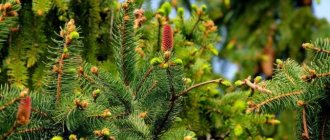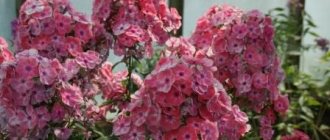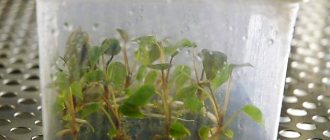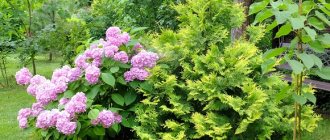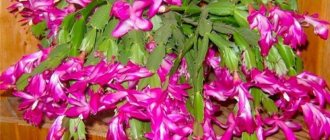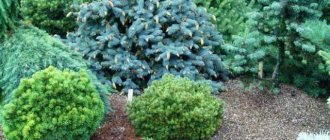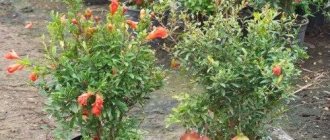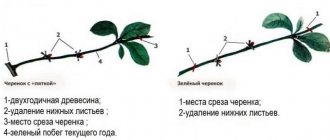Cedar forests are healing for humans. The air there is literally sterile, and this is not surprising, because cedar produces phytoncides that kill pathogenic bacteria. But is it really possible to raise a resident of the taiga forests in our gardens? Let's try to reveal this “terrible secret”.
Cedar is a powerful coniferous tree up to 40 m high with a spreading multi-stage crown, and you can’t clasp the trunk with your hands, because its diameter can reach 3 m. Can you imagine how much area a suburban area should have for the cedar to feel at ease? But for those who cannot boast of a large plot area, there is an alternative: Russian breeders have developed low-growing varieties of Siberian cedar that will not take up much space, but will bring considerable benefits.
There were a lot of tears, a lot of crying. The church was of great importance for the older generation, some of them prayed here in Polish, says Agnieszka Kaniewska. Piotr Kaszwara, Radio Wroclaw: How did you come to Siberia? Because this is a rather unusual place to live.
If you look at the map, this region is located in the middle of Siberia, between Kazakhstan and Mongolia. In the 40s, which we talked about, it was about 25 thousand people, so Alexander Gurzhanov, a Russian researcher involved in the repression of Polish citizens. Among the persons deported to the Altai region were Wojciech Jaruzelski and his family, as well as director Jerzy Hoffman and his immediate family.
The botanical name of cedar is Siberian pine. In nature, there are only 5 species of the mighty giant and a couple of dozen of its decorative varieties, of which only varieties of Siberian cedar produce edible seeds (nuts). It can live in one place for up to 800 years, and is well adapted to the harsh climate of Siberia and central Russia. That's why we'll talk about him.
Can you still date Poles or their descendants? There are several hundred families of Polish origin in Alsace. They are associated in associations, they teach Polish, some people study in Poland. Of the 25,000 people who were sent to this area almost mid-century, is this true? Many of them were former members of the National Army. Hundreds of thousands - here we are talking about Russia.
The main station was Barnaul, the capital of the Altai Territory. The last station on the railway was Biysk. From these two cities they were transported mainly by truck to certain points where they were then worked or transported by sleigh if it was winter. There were also barges along the Ob River. Sometimes they were ready, built wooden barracks, or at first they had to live in dugouts, and they themselves built barracks or cottages.
Video: City of Romantics. Zheleznogorsk-Ilimsky.wmv
For what merits did we fall in love with Siberian cedar? Firstly, it is unusually decorative throughout the year and looks great not only in summer, but also in winter - turning green above the snow-white snowdrifts. Secondly, for its tasty and healthy fruits, from which healing cedar oil is produced. Thirdly, for the resin-resin, which has a wound-healing effect, for the healing pine needles, from which tinctures are made that help with various ailments, and even for the nut shells, which have been used in folk medicine for many years. And, of course, for the healing smell that you want to not only breathe, but enjoy, swallow it, recharging with the vigor of cedar.
So, of course, from the point of view of quotes, the conditions were not the worst, for example, from Vilnius in the north of Russia there was not even any forest and, therefore, wood for building houses. Despite this, almost from the very beginning they must work hard in the mines.
Akatat Altai is rich in forests, so people here are mainly used to reduce them. The area can really be called quite friendly. Winter here is not so frosty, because even if the temperature drops to -50 degrees, the coldness is completely different than in the north. In summer, the dashes on thermometers jump to 40 degrees. As soon as the sun begins to rise, everything here begins to grow, blossom, and simply burst. This way you can eat what the forest brings. They learned from local people who helped them.
If you already have a Siberian cedar growing in your dacha, be sure to set up a resting place in its shade. By resting under a tree even for 1 hour a day, it is quite possible to recover from some diseases, because cedar is able to accumulate healing energy and give it to people. And if you don’t yet have an ornamental healer in your suburban area, be sure to plant one.
Because Siberia has not changed anything. Both then and now, the main password is a survival password. Therefore people should stay here together. Altai is not all. Now you are in Tomsk, and you are also dealing with the Poles. The role in Tomsk played a very important role.
Many of them, even if they were sent to Siberia, were included in the history of the city and region as important figures: lecturers, doctors, architects, merchants, entrepreneurs. The Tomsk route is an interesting combination of Polish history: exile, voluntary resettlement, profitable business, scientific research. One of the cities that can be called a small mirror of history in the middle of Siberia is Bialystok - a Polish village.
Required soil composition
Before planting the seed, the soil where it will be planted is checked. When growing in natural conditions, cedar loves gray podzol soil. The soil must consist of the following components:
Forest litter.- Loam.
- Arshine grains.
- Sulfonic acids.
- Il.
- Silica.
- Trivalent metals.
- Humus.
This soil composition is present in Southern Canada, the Far East, Northern Europe, Siberia, and central America. The soil suitable for growing cedar has a distinct composition. The top layer of soil is gray, and the middle layer has a reddish tint. When the seeds are germinated, they should be planted in similar soil.
Growing a cedar from a nut is not difficult. When the first shoots appear, it is important to choose the right pot for them. It is better to use containers that are connected into palettes. They should be shallow. Thus, it will be easy to remove plants from them, and it will be convenient to observe the planted sprouts.
For planting in a temporary container, you can use any soil. The cedar from the pot will then be transplanted into natural loam.
Growing cedar
You can grow cedar from seeds or by purchasing a cedar seedling from a nursery.
When planting cedar, observe spatial orientation: the distance between trees should be 5-7 m, and the distance from your house and country buildings to the cedar should be at least 3 m. If you plant cedar closer, its powerful roots can damage the foundation of structures. When planting cedar, keep in mind that it loves clay, well-fertilized soils, is shade-tolerant and frost-resistant. Planting cedar seedlings
The authorities were looking for people who settled in Siberia, settlers. Since it was and is a huge area, there was a lot of land that needed improvement. Białystok, in the Pomeranian region, is one of the places where people actually came voluntarily. They came to work for bread, because in the Kingdom of Poland, in the area where they lived, there was poverty, and it was not something they needed to earn for food and survival. Here in Siberia, they received land, loans, loans for the purchase of household or home furniture.
They also had large tax breaks for the first three years. It has become even easier for the Russian state to reach this area. Tickets were paid in full or in part, depending on the size of the family. As for the village, this is a lot. Was this the name of the village from the very beginning?
When choosing cedar seedlings in a nursery, purchase those that “sit” in containers, or, in extreme cases, without containers, but with a large lump of earth on the roots; in this case, the transplantation should be successful. Buy 2-3 year old seedlings. This is the best option in terms of price/quality ratio. At this age, seedlings range in size from 30 cm to 3 m, depending on the cedar variety.
In addition, it gave the settlers a feeling of closeness to Poland, closer to their homeland. Nowadays, probably no one remembers these days, and this is even from stories. The memory of the arrival of Polish families is still alive. And these ladies can amazingly tell you what they heard from their grandparents. But remember the 30s. This is the most and most conversational conversation. Moreover, this period is one of the saddest maps in the history of the village. However, now the fate of the entire country and all nationalities inhabiting the territory of Russia is reflected.
Including the operation against the Poles, which directly affected Bialystok. People were shot only because they were Poles. What were the official charges? People were killed for allegedly spying or promoting anti-Soviet propaganda. One day, one of the villagers joked about the Soviet government at a meeting and was arrested and then killed. People were pulled out of their homes where they were being collected. People can reproduce, for example, the topography of the area of those years.
Discard those plants that have exposed roots and yellow, withered needles. It is quite possible that they were simply dug out of the forest and put up for sale. And forest seedlings take root very poorly in a new place. So, let's start planting cedar:
Dig up the entire area where you plan to plant cedars, and if you are planting one tree, then dig up the soil within a 3 m radius around the planting hole. Maintain a distance between pits of 4 to 6 m (less for dwarf varieties). Make the size of the planting hole 30-40% larger than the size of the tree’s earthen ball. If your dacha soil is clay or loamy, then cedar seedlings can be planted directly into it. But if it is sandstone, then mix the soil removed from the hole with peat and clay in the proportion: 2:1:2. Before planting a seedling, it is useful to dip its roots in a creamy clay solution. Strengthen the support (peg) in the planting hole, then place the seedling there and cover everything with earth. Tie the above-ground part of the seedling to the support with twine. Water the plant moderately and continue watering for 2 weeks at a frequency of 1 watering every 2-3 days (if there is no rain, of course).
How much has changed in Bialystok? The village itself resembles what it was more than 100 years ago. It stood on the majestic central hill and was a very important moment in people's lives. With the advent of the Soviet authorities, the masses became less and less frequent. In the early 1930s, the church was officially closed and turned into a grain store and then a club.
Thus, Bialystok and the church are historical mirrors. Many Catholic churches did not survive, the Soviet authorities dismantled it and dismantled it. This fate met the church in the neighboring village of Malichev, populated mainly by Latvians, as well as settlers.
How to grow cedar from seeds
You can take a longer route: grow cedar from a nut. In the fall, collect ripe cones and select the best quality vigorous nuts. Keep the nuts for 2-3 hours in a weak solution of potassium permanganate, then put them in warm water for 3 days. The water needs to be changed daily. Then place the nuts in wooden boxes with peat or coarse sand, deepen them 1-1.5 cm with your fingers and lightly sprinkle with damp sawdust.
Then it can bring people together. There was life in the church building. First a well was built, later a store, and the residents planted beautiful cedars and fir trees around it. Finally, as you said, it became a magazine and a club. There was music, dancing, film screenings, performances, and meetings. There was also propaganda. The elders say they did not go to the club. For them it was still a holy place - their church, desecrated. But there were people who were young, decided to go there, and today they are very sorry. They claim to have committed a great sin that has somehow desecrated the place.
Pre-make holes in the boxes: on the sides and on the bottom to ensure the flow of oxygen. Now the seeds are ready for stratification (cold keeping). Place the boxes until spring in a room with a temperature of +3 to +5 ° C (you can in the refrigerator) and periodically moisten the soil, and two weeks before planting the seedlings in open ground, bring the boxes into a warm room. At the end of May, the seedlings are ready for planting.
This may be a far-reaching comparison, but when Christianity came to the Poles, the old places of pagan worship were also taken over and churches were built there. So was the Soviet government. These were difficult times for the strongly religious residents of Białystok. Moreover, prayers were prohibited altogether. Everyone prayed in the house, secretly, even with windows. Thanks to the fact that the Soviet authorities decided to use the church building for a warehouse or club, the building could survive. It was the only large building in the village where anything could be done.
You are still using the last time telling this church. Because in the interesting history of the building there are sad moments. After the church was captured by the Soviets, it was in their hands until the end of the year. It has been modified, made smaller, and the wooden beads have been removed. At the beginning of the year, the building returned to the Catholic community in Poland. Then the church began to function again. For the inhabitants of the wall there were “pre-eternal” generations.
Cedar seeds can be sown in open ground without prior germination, but in this case the germination rate will be small. If you decide on such an experiment, organize a garden bed somewhere in the shade in the fall. Add peat and clay to the soil (if necessary). Make grooves at a distance of 10-15 cm from each other, deepen them by 1-2 cm. Place the nuts there at a distance of 6-8 cm from each other and cover the grooves with peat or sawdust. After wintering, in May-June, some of the seeds should germinate. Then cover the bed with the seedlings with gauze so that the seedlings are not damaged by birds, and after a month, when the little Siberian has grown up, remove the gauze. And if you want the cedar to remember you and treat your whole family favorably, hold its nuts in your mouth for just one or two minutes before planting (as bioenergeticists advise).
Three days after Easter and still unexplained circumstances. There was one wooden plank in the wooden building. There are also brick foundations, an iron cross from the bell tower and a fragment of a bell with the inscription “Virgin Mary” on it. Because the statue of the Virgin Mary stood next to the church. He was a few meters from the fire, and he was completely untouched. The residents who rushed to save the church, seeing that nothing could be done, poured it out all the time to save the water.
Any suspicions that might happen? One talks about electric shorts, and the other says that someone set the building on fire to clean up evidence of a burglary. There were some valuable things in the middle. The thieves were allowed to say this? For local residents, the church was a kind of holiness. Even for such local locomotives. Moreover, the icon was huge, since it was about 6 meters, and a melted silver cross was found in the ash.
It should be noted that fruiting of Siberian cedar begins only from the 30th year of life. In order to speed up this process, a cedar seedling is grafted with a cutting from an adult fruit-bearing tree. In this case, you will not get a majestic giant - the cedar will not grow higher than 5 m, but it will bear fruit already 5 years after planting.
❀ Disease and pest control
Despite the fact that coniferous trees have disinfectant and antiparasitic properties, they can be attacked by pests and get sick. Young seedlings are especially vulnerable. It is almost impossible to overcome the powerful root system, crown, and strong trunk of a large tree.
Among the pests that attack cedar, it is worth highlighting: pine hermes, pine aphids, common scale insects, pine moths, and pine cone moths.
Diseases and pests of cedar
Pine Hermes came to Europe from North America. This insect is a type of aphid that easily moves through coniferous trees. It is recognized by the white coating that appears on branches and pine needles. This is an accumulation of pest larvae. Hermes feeds on the juices of the plant. As a result, the needles turn yellow. Adult brown insects increase in size and are recognizable even to the naked eye.
This pest is especially dangerous for young trees. He can completely destroy them. Adult affected plants are severely stunted in growth and lose their beautiful appearance.
Ways to fight:
- Remove and burn branches with white coating as soon as it is detected.
- Use chemicals to treat: a) Aktar for watering at the root as a disinfectant: b) fufan, actellik, decis for treating the crown, karbofos, spark, commander for spraying. The regularity of repeating the procedure is once every 3-4 weeks until Hermes is completely eliminated. This must be done to destroy not only the present pests, but also the next generation.
- Treat with environmentally friendly means - infusions of garlic, pepper, soap solution, ash, tobacco. However, they are only effective at the very beginning, with a small insect infestation.
The pine aphid is a gray insect with egg-shaped hair that settles on pine needles. In winter it lays eggs at the bottom of the needles. Every spring they are treated with karbofos. The same spraying is carried out for preventive purposes.
A difficult to exterminate pest is the common scale insect , since it is protected, as it were, by a “shield”. Spring spraying with insecticides helps get rid of it. But it is rarely found on cedars.
The pine moth is a butterfly that settles on a tree at the end of May. She lays eggs on pine needles. In August, caterpillars form from them, eating everything around them. The optimal temperature for their development is 25-27°C.
The fight against caterpillars is carried out at an early stage using the biological product lepidocide or similar means.
The cone moth causes enormous damage to cones, damaging up to 50% of the seeds. Cedar cones fall.
, the bark beetle becomes active . The name itself says that it infects the bark and makes passages in it for the deposition of larvae. They are difficult to notice from the outside. And dead bark with holes is visible to the naked eye. They are fought with the help of special drugs.
Among the pests of cedar there are also Siberian spruce woodcutter and black spruce longhorned beetle.
Seryanka is a dangerous disease for coniferous plants . This fungal disease is also called blister rust or tar cancer. It can last for 20-30 years. During this period, the tree weakens, its growth slows down, and then it dies.
Sick trees and branches must be destroyed.
Helpful advice : do not plant currants and gooseberries near cedar; they act as an intermediate host for the disease.
Rust is a fungal disease. It is placed on the needles in the form of yellow bubbles, which over time turn into powder. Later it spreads throughout the tree. Wet, warm weather is especially favorable for its reproduction.
It is recommended to break off the affected parts and burn them.
Various microorganisms cause mold and rot on cedar seeds. Treatment of seeds and soil, proper agricultural techniques for growing seedlings help prevent fungal diseases.
Helpful advice. Sources of infection are grasses and weeds growing around the cedar. They should be removed regularly.
You can avoid many troubles by carrying out preventive treatment with insecticides.
Growing cedar from seeds is a long process. But as a result, it is possible to improve the area with this majestic plant.
marked
Your opinion is very important to us. Please rate the article: There are no ratings yet. Please rate
See also related articles
Ficus Rubber: pruning and crown formation
How to grow mangoes from seeds at home, in a pot: for beginners
How to grow an avocado from a seed at home: in a pot, for beginners
How to grow chestnut from a nut at home in a pot
How to grow dates from seeds at home in a pot
Myrtle tree: care at home
How to grow pomegranate from seeds at home to produce fruits
How to grow lemon from a seed at home with fruits: step by step
Tabernemontana: care at home
Add a comment Cancel reply
You must be logged in to post a comment.
✿ Alphabetical index
✿ Categories
- Houseplants
- Bromeliads
- Decorative foliage
- Trees and shrubs
- Orchids
- Succulents
- Blooming
- Perennial
✿ Popular articles
- How to grow chestnut from a nut at home in a pot
- Clematis: care and cultivation in the garden
- How to grow pomegranate from seeds at home to produce fruits
- How to grow lemon from a seed at home with fruits: step by step
- Decembrist flower: care at home, how to water correctly
- Hedera "Helix mix": home care
✿ Latest comments
- Lyudmila on How to grow a lemon from a seed at home with fruits: step by step
- Tatyana on Tillandsia Anita: care at home
- LOVE for the entry Tulips: care and cultivation in the garden
Copyright © 2018-2021 GARDENER'S BOOK.
0+ By using bookgardener.ru you accept the terms of the USER AGREEMENT. Copyright for the posted materials belongs to the editors of the online magazine. When reprinting and using materials, an active hyperlink to BookGardener.ru is required
Video: Nature of Siberia - Beautiful places! Mzas – Irymar
The Church has united different cultures, different peoples over the years and continues to unite because you are trying to restore all of this. The Church is definitely alive, because the walls are one thing, but people, memory and the need for unification are a completely different story. Whenever we come to the village, these children, descendants of Poles and small children, constantly ask us if the church will be restored. Then we ask: do you want it to be? There is always one answer: yes, there is no other choice.
The official fundraising has begun. Yes, but we don't yet know what the cost of reconstruction will be. Especially after this you will come to Poland with several photo exhibitions. Around June 20 we will organize an exhibition dedicated to the Siberian village of Biełystok in Białystok, Poland. There will be lectures in Warsaw, Opole, Radom and Krakow, and a photo exhibition dedicated to the whole of Siberia, planned in Wroclaw. The most popular is Vershina, in the Irkutsk region, and yet it is not the only place in the interior of Russia.
Cedar tree pollination
Cedar is a monoecious plant. In the most illuminated places of the crown there are female buds, and below are male buds. The tree begins to “bloom” at the beginning of summer. The “female” cones are crimson and seem to be hidden in the needles near the upper bud. The male “flowers” are raspberry-orange in color and are collected near the base of the shoot. After about four days, the flowers turn brown and fall off. Pollen is carried by the wind.
After pollination, the female cones close and become green-brown in color.
The seeds are fertilized and formed in early autumn. It is because of wind pollination that it is best to have several cedars on the site. To know that the plant will definitely produce a harvest, you can pollinate it yourself: shake the pollen from the male “flowers” onto a sheet of paper, pour it into some container and put the container in the refrigerator. When you see that the female “flowers” have begun to open, blow the pollen onto them or apply it to the “flowers” with a soft brush.
Siberian cedar variety “Narcissus”
And here is another variety of low-growing Siberian cedar: “Narcissus”, hybridized by breeders exclusively for decorative purposes. The height of cedar of the Narcissus variety does not exceed 1 m, the cones are large, barrel-shaped, the seeds are inedible.
What progress has come! Talented selectors were able to achieve the unity of nature and science. As a result, we see low-growing varieties of the mighty cedar, which gives its noble heart to people who grow it in their country plots.
We are also promoting in Germany and our support has also been announced by American Polonia. Therefore, there is hope that it will be possible to restore the burned church. The chance is that we want to widely demonstrate our actions, encourage as many people and institutions as possible, but, for example, we, of course, will not go to the States, because we are collecting money, we do not want to spend it on travel.
Will Poles in Bialystok in Siberia still understand the words of support coming from their homeland? There were very few traces of the Polish language there. There is only one woman, Maria Markish, who uses it freely. However, she cannot read Polish because she learned it from the ear. The language he speaks is not literary, but rather a rural language, but beautiful. Many people understand us very well, they also pray in Polish. More recently, on the 79th anniversary of almost all men from Białystok, in the late 1930s, the rosary was rejected in Polish.
Cedar belongs to the large Pine family, genus Cedar, or Siberian cedar pine. This genus is of particular interest because of the universal value of its wood, needles and seeds. Cedar is also in demand in landscaping.
Cedar in the photo
The cedar tree looks like a real giant: it has a powerful trunk, reaching a height of 25 to 45 m, depending on the type.
Unlike Scots pine, cedar needles are surprisingly soft, long, triangular, and collected in whorls of 5-6 pieces. And pine has two and very rarely three needles.
There are two types of shoots - elongated vegetative and shortened generative. The tree is monoecious. Male buds are in the form of spikelets looking up, red or yellow. The female ones - cones of 2-4 pieces - are located at the top of the shoot and are purple in color.
The description of cedar roots is akin to the tree itself: the root system is as powerful as the above-ground part, which allows the plant to withstand all natural disasters and be unpretentious in cultivation. An adult cedar does not require agrotechnical care.
As you can see in the photo, the cedar tree is very beautiful with its green outfit at any time of the year:
Its antimicrobial properties are also very valuable. The air around these trees is practically sterile. Many cedars have been planted by amateurs in summer cottages, household plots and garden plots in central Russia. It cannot grow in dry sandy places, but prefers sandy loam or loamy, moist, fertile soils.
Almost all types of cedar pines in forest plantations begin to bear fruit at 30-60 years, sometimes later, and in gardens where care and feeding with fertilizers are carried out in a timely manner - at 15-20 years and continue to bear fruit up to 250-300 years. A good harvest of large pine nuts occurs in those areas where 2-3 cedars grow in a group, since conifers are cross-pollinated trees. The seed development cycle of cedar lasts one and a half years.
Four types of cedar grow in Russia - Siberian, European, Korean and Siberian dwarf cedar.
You can familiarize yourself with the varieties of cedars and their photos on this page.
Caring for seedlings and their subsequent transplantation
Cedar sprouts do not require much attention; they only need to moisten the substrate and maintain the temperature: room temperature in the summer and cool in the winter. It is useful to feed one-year-old seedlings with natural immunostimulating agents - nettle infusion, for example.
In the first year, young cedars cannot be disturbed by transplanting; digging them up without damage will only be possible for 2–3 years of life. The most important thing is maintaining the integrity of the still fragile root system. If the seeds were planted in the soil, it is advisable to remove seedlings with a closed rhizome, this will increase the chances of survival several times.
Adult seedlings can be planted in a large pot and continued to be grown at home, or transferred to open ground, initially shaded from direct sunlight.
